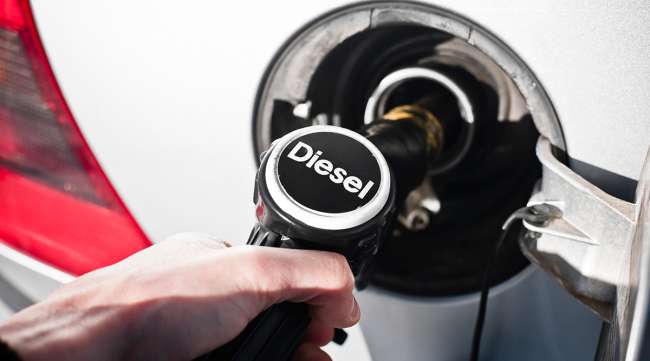Staff Reporter
Average Diesel Price Falls 4.3¢ to $2.437 a Gallon

[Stay on top of transportation news: Get TTNews in your inbox.]
The nationwide average price of diesel fuel continued its fall last week, declining 4.3 cents per gallon, the U.S. Energy Information Administration reported April 27.
The EIA said the price of diesel stood at $2.437 a gallon, 73.2 cents a gallon less than year-ago levels.
The price of diesel fell in every region across the country. The Gulf Coast saw the biggest decrease at 6.4 cents from the previous week to $2.208. The Lower Atlantic saw the smallest decline at 2.8 cents to $2.406.
The entirety of the East Coast saw a decline of 3.1 cents to $2.545 a gallon, while the Midwest saw costs decline 3.9 cents to $2.287. The West Coast saw prices fall 4 cents to $2.934. Absent California, the West Coast saw a 4.7-cent decrease in prices to $2.593.
California still has the nation’s most expense diesel despite steady price declines in the weeks since the coronavirus pandemic started. The state saw prices fall by 3.4 cents to $3.214.

Much of the trucking industry relies on older onboard technology for critical functions, which can hurt reliability and efficiency. So is it time for fleets and their technology vendors to implement faster replacement cycles for onboard tech? Seth Clevenger talks to Ray Greer of Omnitracs and Deryk Powell of Velociti. Hear a snippet, above, and get the full program by going to RoadSigns.TTNews.com.
Meanwhile, the national average price of gasoline also plunged further, sinking 3.9 cents to $1.773. Prices fell in all regions across the country. New England and the Lower Atlantic regions both saw the smallest decline in prices at 2.8 cents.
The most significant change for gasoline was on the West Coast, where it declined 6.1 cents from the previous week to $2.454 a gallon. The West Coast absent California saw an 8-cent decrease in prices to $2.216. Nationally, gasoline costs $1.114 per gallon less than it did a year ago.
“With fuel prices down about 15% since late February, we’re on a downward trend that official forecasts say will continue into the summer,” Drew Wilkerson, president of transportation for North America at XPO Logistics, told Transport Topics. “Looking ahead, fuel prices should stabilize when major manufacturing returns and demand rebounds.”
XPO Logistics is a global transportation and logistics company that is based in Greenwich, Conn. It ranks No. 1 on the Transport Topics Top 50 list of the largest logistics companies in North America, and No. 3 on the Transport Topics Top 100 list of the largest for-hire carriers.
Wilkerson said the company is using technology to help manage the uneven environment brought on by COVID-19.
“Our XPO Connect technology helps customers and carriers account for fuel prices and many other cost variables in real time, which is especially important in challenging environments,” he said.

The fuel markets were expecting higher demand for diesel earlier this year as the maritime industry switched to low-sulfur diesel, but that outlook was subverted when the coronavirus pandemic sent demand plummeting.
“Just as you don’t have as many trucks crisscrossing the country, you don’t have as many container vessels and other vessels that are crisscrossing the ocean,” Tom Kloza, co-founder and global head of energy analysis for Oil Price Information, told TT. “All of that demand surge that was kind of counted on fell apart with COVID-19.”
The coronavirus outbreak has had a profound impact on the global economy, including fuel prices. China being the epicenter of the virus played a significant role as it is a major fuel consumer, but global lockdowns and social distancing elsewhere around the globe have meant much less fuel being consumed overall.
“COVID-19 has destroyed so much demand,” Kloza said. “It has destroyed it from the bottom of the barrel — whether you are talking about bunker fuel or asphalt — to the top of the barrel, if you’re talking about gasoline, and particularly jet fuel.”

Kloza
“Eventually, when we see demand recovery, it will cause world oil markets to balance,” Kloza added. “At the moment, in the second quarter we’re looking at demand destruction thanks to COVID-19 of maybe 20 or 30 million barrels a day.”
The price of oil turned negative for the first time ever on April 20, the low point in a steady fall that has overwhelmed the global storage capacity.
“It’s actually been an incredible year so far and we’re almost a third of the way through it,” Kloza said. “There has been some things I have never seen before in 45 years of following oil prices and analyzing them.”
Kloza added that it has started to settle down and that this situation is an anomaly. He noted that we may see single digit prices again for crude oil, particularly in the next 30 or 35 days.
Want more news? Listen to today's daily briefing:




